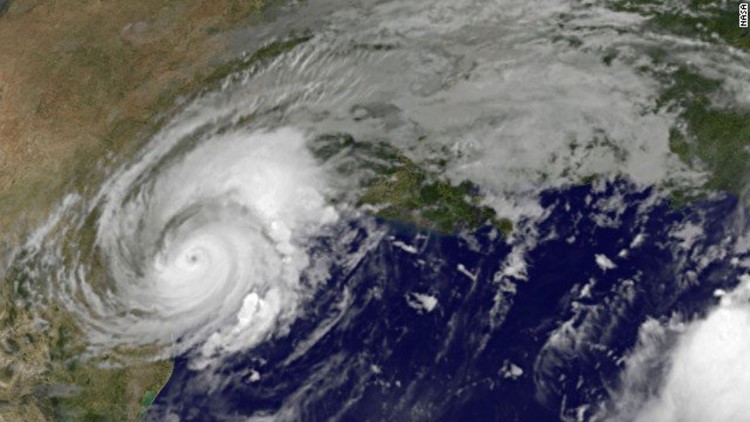Hurricane Harvey has done significant damage to the Texas coast, ripping apart buildings in the Corpus Christi area and dumping near-record rainfall on Houston. While we don’t know what the exact extent Harvey’s impact, we can look at how it stacks up against other historic hurricanes and storms.
Date
Harvey shares an incredibly close overlap — down to the week — with several other devastating storms, including Hurricane Andrew, which ripped apart South Florida in 1992, and Hurricane Katrina, which plunged New Orleans and surrounding areas into crisis in 2005 and remains one of the most destructive US hurricanes in recorded history. Although Harvey was downgraded to a tropical storm on August 26th, heavy winds and rainfall continue to threaten the area.
Hurricane Harvey: August 24 — TBD
Hurricane Katrina: August 23 to August 31, 2005
Hurricane Andrew: August 16 to August 28, 1992
Size
When considering the damage a storm might inflict, size is only one of several factors. For instance, Harvey is relatively small when looking at the diameter of the tropical force winds it produces. It is also important to note that a large storm out in the ocean obviously is likely to produce much less damage than a smaller storm that travels inland.
Hurricane Harvey: 280 miles
Hurricane Igor (2010): 920 miles
Igor was the largest recorded Atlantic storm. It threatened the Canadian coast near Newfoundland, but its largest point was when it was still over the ocean.
Sandy (2012): 482 miles
Sandy, most commonly classified as a superstorm, was the second-largest hurricane on record by this definition. It caused significant damage to New York, New Jersey and other areas in the northern United States.
Description
The description of Hurricane Harvey is what worried meterologist and experts. Look at some of the language from some of Friday’s National Weather Service bulletin, compared with the weather service’s Hurricane Katrina descriptions in 2005.
Hurricane Harvey:
Protect against life-threatening wind having possible devastating impacts across Matagorda Bay (Texas) from Port O’Connor to Sargent. Potential impacts in this area include:
Structural damage to sturdy buildings, some with complete roof and wall failures. Complete destruction of mobile homes. Damage greatly accentuated by large airborne projectiles. Locations may be uninhabitable for weeks or months. Numerous large trees snapped or uprooted along with fences and roadway signs blown over. Many roads impassable from large debris, and more within urban or heavily wooded places. Many bridges, causeways, and access routes impassable. Widespread power and communications outages.
Hurricane Katrina:
Devastating damage expected
Most of the area will be uninhabitable for weeks … perhaps longer. At least one half of well constructed homes will have roof and wall failure. All gable roofs will fall … leaving those homes severely damaged or destroyed. …
Power outages will last for weeks … as most power poles will be down and transformers destroyed. Water shortages will make human suffering incredible by modern standards.
The vast majority of native trees will be snapped or uprooted. Only the heartiest will remain standing. … Livestock left exposed to the winds will be killed.
Strength
Hurricane Harvey made landfall Friday night as a Category 4 storm on the Saffir-Simpson scale. This scale measures wind speed, and at a Category 4, winds reach between 130 and 156 mph. This is described as a storm creating “catastrophic damage.” Here are how other storms were categorized when they made landfall:
Hurricane Irene (2011): Category 1, landfall in North Carolina
Hurricane Ike (2008): Category 4, landfall in the Bahamas. Later, Category 2, landfall in Texas.
Hurricane Katrina (2005): Category 1, landfall in Florida. Category 3, second landfall in Louisiana.
Hurricane Charley (2004): Category 4 upon second landfall in Florida.
Hurricane Andrew (1992): Category 5, landfall in South Florida. Was reclassified from Category 4 in 2002.
Flooding potential
While the storm has significantly weakened, it is still lingering on the Texas coast after days of wind and rainfall. This has led to unprecedented flooding and could have a years-long impact on infrastructure and communities. As of Monday, Harvey has dumped more than 11 trillian gallons of rain on Texas residents. According to the National Weather Service, Houston could see 50 inches of rainfall, which would be a Texas record.
That is a staggering number when compared to the rainfall seen other deadly storms:
Hurricane Katrina: 17” maximum rainfall
Hurricane Andrew: 7” maximum rainfall (Florida), 12” maximum rainfall (Louisiana)
Superstorm Sandy: ~7” maximum rainfall
Hurricane Irene: 17” maximum rainfall
This flood threat is where Harvey and Katrina are similar, but Katrina’s floods weren’t just because of rainfall. Katrina’s landfall in low-lying Louisiana demolished levees, which is what led to the devastating flooding.
Lives lost
So far, there have been two confirmed deaths in Harvey’s wake, but local authorities have said that number will sadly rise. However, the number will hopefully not reach the horrific proportions of Hurricane Katrina, or some older storms that claimed thousands of lives.
Hurricane Katrina: 1,833
Hurricane Sandy: 147 (across multiple countries)
Hurricane Isaac: 34 (across multiple countries)
Hurricane Irene: 40 (across multiple countries)
1928 Hurricane in Florida: 2,500
1990 Hurricane in Galveston, TX: >8,000
The Galveston hurricane remains the deadliest recorded hurricane in American history.



